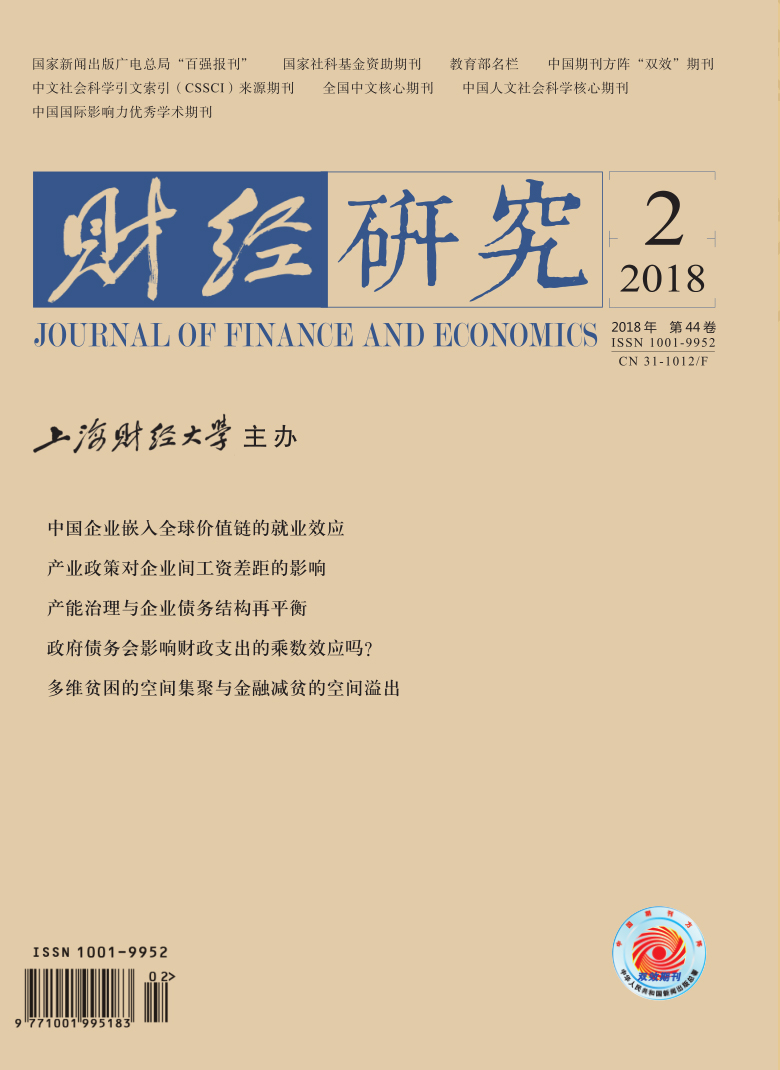Since the reform and opening-up, China has formulated a series of poverty reduction policies, has successfully solved the problem of food and clothing for hundreds of millions of rural poor people, and has become the country with the most poverty reduction population in the world. Among many poverty reduction policies, financial development has been playing an important role. Much literature has proved that the poverty reduction effect of financial development comes not only from its direct role in the redistribution of capital but also from the indirect role resulting from the promotion of economic growth and the adjustment to income distribution. However, we find that when discussing how to better play the role of financial development in poverty reduction, the existing researches generally ignore the analysis of the characteristics of poverty itself, especially its spatial distribution characteristics. Due to the typical regional imbalance characteristics of China’s economic development, the exploration of spatial characteristics of poverty helps to not only deepen the understanding of poverty, but also better play the role of financial development in poverty reduction. Based on the above consideration, this paper focuses on analyzing multidimensional characteristics of rural poverty and its spatial distribution characteristics, and explores the spatial effect of financial poverty reduction. Using provincial panel data from 1999 to 2014 and spatial econometric model, and with the setting of three weight matrices of geographic distance weight, economic distance weight and nested weight, this paper analyzes the spatial distribution characteristics of income poverty, education poverty and medical poverty, and then examines the spatial effect of financial poverty reduction. It shows that no matter which weight matrix is adopted, income poverty, education poverty and medical poverty show significant spatial positive correlation, meaning that poverty distribution has a typical ‘poor-poor’ agglomeration characteristic. This feature actually reveals the imbalance of China’s regional development from a perspective of multidimensional poverty. Further studies find that financial poverty reduction shows a significant spatial spillover effect. But as for the poverty of public services like medical poverty, its improvement mainly depends on governmental fiscal expenditure and local economic development level. Compared with the previous research, the possible contributions of this paper are as follows: firstly, this paper explores the spatial distribution characteristics of poverty from a perspective of multidimensional poverty and provides empirical evidence for the pooled characteristics of poverty. Secondly, based on the distribution characteristics of poverty, we use the spatial econometric model to find that financial development can effectively alleviate the spatial agglomeration effect of poverty. This empirical result shows that the existing literature may underestimate the financial role in poverty reduction.
 / Journals / Journal of Finance and Economics
/ Journals / Journal of Finance and EconomicsJournal of Finance and Economics
LiuYuanchun, Editor-in-Chief
ZhengChunrong, Vice Executive Editor-in-Chief
YaoLan BaoXiaohua HuangJun, Vice Editor-in-Chief
Spatial Agglomeration Effect of Multidimensional Poverty and Spatial Spillover Effect of Financial Development on Poverty Reduction: Empirical Evidence from China
Journal of Finance and Economics Vol. 44, Issue 02, pp. 115 - 126 (2018) DOI:10.16538/j.cnki.jfe.2018.02.009
Summary
References
Summary
[1]Chen Q. Advanced Econometrics and Stata Applications[M]. Higher Education Press, April 2014 Second Edition.
[2]Fu P, Zhang P. The Threshold Effect and Regional Difference of Relief Effect on Rural Finance Development: The Empirical Evidence from China[J]. Contemporary Finance & Economics, 2016, (6):55-64.
[3]Gao Y D, Wen T, Wang X H. Spatial Econometrical Research on the Poverty Alleviation Effects of China’s Fiscal Finance Policy for Agriculture[J]. Economic Science, 2013, Vol. 35(1): 36-46.
[4]Li H J. Spatial Econometrical Research on the Poverty Alleviation Effects of China’s Fiscal Finance Policy for Agriculture[J]. Statistics & Decision, 2016,(7):162-165.
[5]Lv Y B, Zhao B B. The Development of Rural Finance and Anti-poverty Performance in China: Empirical Evidences from 2003 to 2010[J]. Issues in Agricultural Economy,2014,(01):54-60.
[6]Shi R R, Xu Z Y, Zhao Y J.The Threshold Effect of Financial Development on Poverty Alleviation: An Empirical Test Based on the Inter-Province Panel Data in Western China[J]. China Soft Science, 2013,(03):32-41.
[7]Su J, Hu Z Y, Xiao P. The Nonlinear Research of the Multidimensional Relief Effect on Rural Finance Development in China-Based on The Panel Smooth Transition Regression Model[J]. Journal of Finance and Economics, 2014, (07):86-96.
[8]Wu Y Z, Lu F. Retesting the Relationship between the Regional Financial Development and the Change of Income Differences between Urban and Rural Areas[J]. Statistics & Decision, 2014,(12): 116-119.
[9]Yang N, Ma C X, Analysis of the Influencing Mechanism of Financial Development on Urban-Rural Income Gap in China Based on Panel Threshold Model[J]. Journal of Applied Statistics and Management, 2014, (03):478-489.
[10]Yao Y J, Li M Z. Anti-Poverty Effect of Financial Development in China: Empirical Test From the Perspective of Non-Economic Growth[J]. Journal of Shanghai University of Finance and Economics, 2014,(01):69-76.
[11]Zhang B, Weng C. Poverty Alleviation of Rural Financial Development: Spatial Overflow and Threshold Characteristics[J]. Journal of Agrotechnical Economics, 2015,(9): 37-47.
[12]Beck T, Asli D K, Levien R. Finance, Inequality and the Poor[J], Journal of Economic Growth, 2007, 12(1): 27-49.
[13]Bruce E H. Sample Splitting and Threshold Estimation[J], Econometrica, 2000, 68(3): 575- 603.
[14]Burgess R, Pande R. Do Rural Banks Matter? Evidence from the Indian Social Banking Experiment[J], The American Economic Review, 2005, 95(03): 780-795.
[15]Clarke G R G, Xu L C, Zou H F. Finance and Income Inequality, What Do the Data Tell Us?[J]. Southern Economic Journal, 2006, 72(3): 578-596.
[16]Dollar D, Kraay A. Growth is Good for the Poor[J]. Journal of Economic Growth, 2002, 7(3): 195-225.
[17]Geda A, Shimeles A, Zerfu D. Finance and poverty in Ethiopia[R].Research Paper No 51, United Nations University, 2006.
[18]Greenwood J, Jovanovic B. Financial Development, Growth, and the Distribution of Income[J], Journal of Political Economy, 1990, 98(5): 1076-1107.
Cite this article
Fu Peng, Zhang Peng, Zhou Ying. Spatial Agglomeration Effect of Multidimensional Poverty and Spatial Spillover Effect of Financial Development on Poverty Reduction: Empirical Evidence from China[J]. Journal of Finance and Economics, 2018, 44(2): 115–126.
Export Citations as:
For
ISSUE COVER
RELATED ARTICLES




 8706
8706  9242
9242

